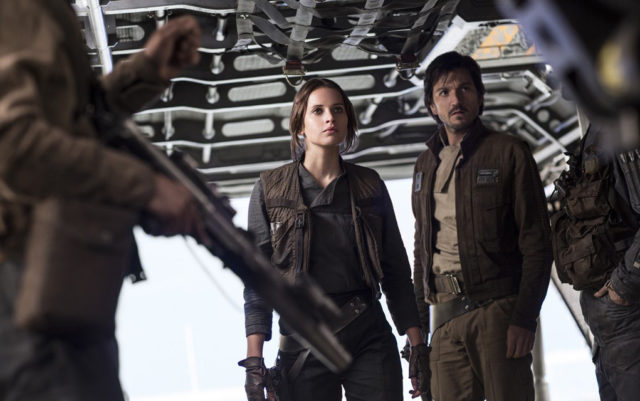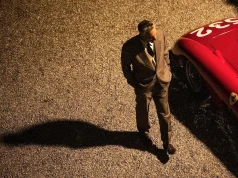
I spent most of the beginning of Rogue One: A Star Wars Story trying to decide if Forest Whitaker’s character was named Saul, Sol, Saw or Salt. Just FYI: It’s not Salt. It took me longer to rule that one out than I’d like to admit.
My obsession with this wildly unimportant matter mirrors the problems inherent in the film’s first two acts. Namely, writers Chris Weitz, Tony Gilroy, John Knoll and Gary Whitta unwisely spend the currency of early running time on irrelevant, plot-based nuisances. Instead, they should have been inducing our affections toward the ragtag, wartime, space misfits who we never really get to know well. If they had, the squeel-evoking, shoot-em-up goodness of the final third would have been adorned with a glorious gravitas and meaty melancholy: It would have been a deep-dish pizza of fried awesome. Instead, we merely get a hot, greasy slice of “pretty good.”
Whitaker plays Saw Gerrera — you’re welcome for either preventing confusion when you see it or solving the pronunciation mystery in what you just “saw.” Saw is an extremist insurgent striking at the Empire, prior to the events of Star Wars Episode IV: A New Hope. An imperial pilot, Bodhi Rook (Riz Ahmed), defects and brings Saw a hologram of Galen Erso (Mads Mikkelsen), whose “good guy” buzz is mad harshed by having to create the Death Star. In order to get info, Galen’s daughter, Jyn (Felicity Jones), is sprung from prison by the Rebel Alliance to meet with Saw, who helped her escape the clutches of the Empire when she was just a kid.
Jyn, Cassian Andor (Diego Luna), whose choice of leather jacket is Star Wars shorthand for “affable roguish fella” and his wry, possibly murderous droid, K-2SO (Alan Tudyk), team up with a blind Jedi-esque dude, Chirrut Îmwe (Donnie Yen), and his maybe-more-than-friends amigo, Baze Malbus (Wen Jiang). Along with a small group of nameless Rebel soldiers, the underdogs attempt to steal the Death Star’s construction plans. They’re like a platoon of heroes willing to take on a mission of certain death. They’re like rejected soldiers who are okay with martyrdom. They’re like some kind of…
Unlike Suicide Squad, rabid executive interference in the production of Rogue One, including a rumored second director, didn’t render things nigh-incomprehensible or subject us to more Jai Courtney. Overall, the parts that read like studio notes actually work better than the stuff that obviously bears director Gareth Edwards’ Godzilla-sized fingerprints.
The good news: Darth Vader once more is an unholy bad-ass, the ground-and-sky final battle is a franchise best and composer Michael Giancchino will help us get through the inevitable loss of John Williams. What’s not so good? Despite the setting, Jyn doesn’t get enough space to shine, Cassian plays like an emo Han Solo and all other “rogues” are one-note caricatures.
This doesn’t mean it isn’t fun, complete with a stick-the-landing gymnastic finish that will get 10s from even the Russian judges, if they’re not busy hacking elections. It’s filled with Easter eggs, but not fan fiction. It’s also fun, but not iconic. And it’s universe-expanding, but not defining. Rogue One is a worthy spin-off, even if it still has to sit at the kids’ table during franchise holidays.
This review previously appeared in The Reader of Omaha, Nebraska.
Three stars.














